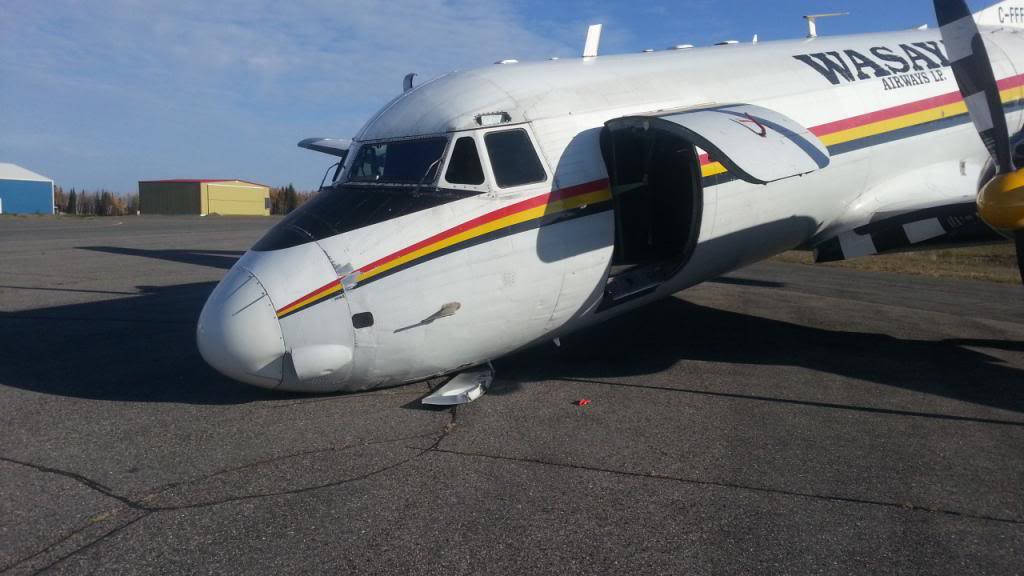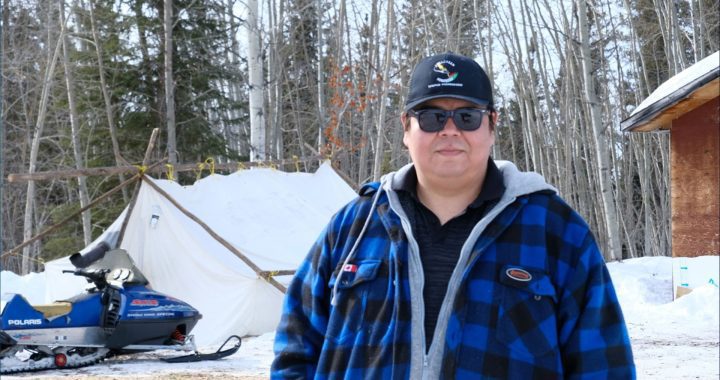UPDATE: This story now includes responses from Transport Canada that were provided after publishing. APTN also recently interviewed a senior employee at Transport Canada and will have more on that interview soon. Additional attempts to reach Wasaya Airways have been ignored or rejected.
Kenneth Jackson
APTN National News
Transport Canada found safety problems with Wasaya Airways in every audit after one of the airline’s planes crashed, killing eight people in 2003 documents show.
Despite this, Transport Canada has allowed Wasaya to fly and according to one expert it appears the feds have been “reluctant” to take a stronger approach after reviewing documents obtained by APTN.
In fact, several experts told APTN they believe Transport Canada should have clipped Wasaya’s wings long ago.
One northern Ontario First Nation chief had his own safety concerns and recently brought in another airline to service his community. Many northern Ontario communites depend on Wasaya for travel, including to see a doctor. Wasaya was paid more than $14 million last year from Health Canada to transport people for medical purposes.
As for Wasaya, the company refuses to answer questions on safety and has been fighting behind the scenes to keep its safety audits from reaching the public based on interviews with Transport Canada.
In February, confidential sources provided APTN with a Transport Canada safety audit indicating a flawed safety management system, financial records alleging mismanagement and a questionable police fraud investigation that was called off when Wasaya simply told them to stop investigating.
Since then, APTN has been trying to get all of Wasaya’s safety audits going back to 2001 through Access to Information.
APTN recently received almost 1,200 pages of documents from the federal department.
All but 50 were blank.
Wasaya convinced Transport Canada not to release the audits arguing the documents could either cause them harm, are confidential or personal information. APTN has appealed to the Information Commissioner for their release.
But, what wasn’t blank paints a disturbing picture of Wasaya’s safety record.

The first audit took place six days after the deadly crash that killed men, women and children flying to Summer Beaver First Nation in northern Ontario Sept. 11, 2003. The cause of the crash was never determined.
The audit found that Wasaya was in “non conformance” in a number of safety areas based on letters to Wasaya from Transport Canada that weren’t redacted.
Because the actual audits were redacted, it’s not clear what the problems were.
But whatever the issue, it took the company nearly 19 months before Transport Canada was satisfied Wasaya had corrected them.
Multiple times Wasaya’s submitted proposals to fix the problems but they were rejected by the federal regulators.
“Responses determined unacceptable, for reasons noted, require an acceptable corrective action plan for each finding,” wrote Hanif Mawji, a manager with Transport Canada, Jan. 29, 2004. “Failure to provide responses by the above mentioned date, or failure to complete the corrective actions within the time frames specified, will be considered as failing to meet the conditions of your approved certificates.”
According to the letters, Transport Canada later accepted the changes in April 2004, but a follow up inspection appeared to change that.
Transport Canada didn’t officially sign off on Wasaya’s safety changes until Feb. 24, 2005 according to the documents.
“”Transport Canada took immediate action following the accident in 2003 and conducted a process inspection to determine whether the company could continue to operate safely,” said a Transport Canada spokesperson. “In the case of the 2003 inspection, the company was brought into compliance with a short term CAP. The 19 month time period to accept the long term CAP does not mean that the company was operating in non-compliance, but rather that it took 19 months for the company to produce an acceptable long term CAP.”
This was around the same time Transport Canada started implementing “safety management systems” that critics say basically allows airlines to regulate themselves.
The goal of is SMS is to allow airlines to follow a set of safety rules and document it themselves as outlined by Transport Canada who then audit the records and interview employees to ensure the SMS is working.
From the beginning it appears Wasaya didn’t grasp SMS.
September 2006 – Transport Canada audits Wasaya’s Canadian Aviation Regulations and manuals and finds problems. It issues a CAP and more.
“You should know that certain audit findings indicative of potential contravention of the CARs or Aeronautics Act were referred for Transport Canada Enforcement review and appropriate follow-up action,” wrote Yves Lemeiux, a regional director civil aviation, Oct. 24, 2006.
What they were APTN can’t say because the pages were blank.
September 2007 – Transport Canada performs an audit and issues a CAP, which Wasaya completes. The corrections are rejected Jan. 25, 2007 by Frank Decicco, civil aviation inspector with Transport Canada.
Again, Wasaya is warned failure to complete the CAP could put their Air Operator Certificate in jeopardy.
May 2009 – Wasaya is audited again and problems are found.
Transport Canada wants another CAP on safety procedures. Decicco rejects Wasaya’s responses once again.
December 2009 – An audit finds problems and a CAP is issued.
January 2010 – Another audit of the Approved Check Pilot finds problems. Wasaya’s fixes are accepted in April 2010 and Transport Canada says a follow up will happen to ensure Wasaya has properly implemented changes.
However, a June 2010 letter rejects Wasaya’s changes that Transport Canada had previously approved in April.
April 2011 – Wasaya’s SMS is audited again to ensure the airline implemented it correctly.
Transport Canada finds issues in eight categories – safety management plan, safety oversight, investigation and analysis, risk management, aircraft inspection, dangerous goods operations manual and procedures for carrying dangerous goods.
Later that year, Transport Canada said they were “pleased” to sign off on Wasaya’s changes.
However, Wasaya’s SMS is audited again in March 2013.
APTN has a full copy of that audit, as previously reported.
Despite Transport Canada’s assurances Wasaya had corrected several issues in 2011, two crept back up just two years later.
The safety management plan continued to “break down”.
“There were indications that the employees had started to loose (sic) respect for the process and to question their supervisor’s commitment or their ability to bring about change,” the audit reported. “There were several gaps in functionally related elements which will cause the system to continue to break down.”
Issues were found, as well, with safety oversight.
“With respect to the reactive and proactive investigations, the corrective actions were not always being implemented. Follow up activities reflected the failure of the implementation verses the effectiveness of the plan,” the audit reported. “Investigation, implementation and follow up are all interdependent on each other to ensure the success of the system.
Those two issues were considered “moderate” but two areas were considered “major.”
One major concern was management didn’t “support the completion of corrective actions.”
Dave Winter used to work for Transport Canada as aviation safety inspector. He retired shortly after SMS was implemented.
APTN had Winter review the 2013 safety audit in February and he said at the time he believed Wasaya should have been grounded, at least it’s what he would have done.
We asked him again to review the letters APTN obtained through Access to Information.
“I looked over all those pages and see that the Ontario region of Transport Canada needs to take some definitive action on the company. It seems Transport Canada is very reluctant to do anything,” said Winter. “In my opinion the company should have their certificate suspended.”
Winter has never been shy to express his dislike for SMS and said it’s the reason he retired after more than 30 years on the job.
However, if an airline takes SMS serious it can work he said.
“Any company that buys into the system has found very good success with it, but the company must be totally committed to it which it appears Wasaya has not,” he said. “Too bad there are so many redacted pages.”
A long time United Airlines pilot and current Air Canada mechanic reviewed the same documents and both concluded Transport Canada should have took a stronger stance against Wasaya.
Chief Alvin Beardy of Sachigo Lake First Nation north of Thunder Bay said he grew tired of Wasaya and negotiated with North Star Air to start flying into the community.
Beardy said he made the decision after a Wasaya plane flying to his community in April had an incident when a door opened mid-flight.
His people were scared and concerned with Wasaya. He said it was one of several incidents he could recall.
When he asked Wasaya for assurances, Beardy said he couldn’t get anyone on the phone.
So he wrote Wasaya Airways President Tom Morris.
“An airline carrier has a duty to maintain its aircraft in safe and working condition, and clearly failed to do so,” said Beardy. “This incident put community members’ lives at risk and it caused extreme distress and trauma to them and their families.”
He then went with North Star.
He’s not the only one.
One of the 12 First Nation community owners signed with North Star in June as well.
Behind the scenes the chief of Muskrat Dam First Nation Gordon Beardy grew tired of the financial issues internally and looked to break free of Wasaya earlier this year.
It’s believed they are still technically an owner.
Gordon Beardy wasn’t available to comment on this story.
APTN tried to reach multiple people at Wasaya Airways and no one would return calls or emails.
There was another audit APTN requested.
It happened about a month before the 2003 crash and Transport Canada said it was “expunged due to expired retention periods.”
Transport Canada said they take safety seriously and assured all necessary steps were followed.
“Should safety deficiencies with the company be identified, the department will continue to take appropriate action,” said a spokesperson, adding, “Despite substantial increases in air traffic, Canada boasts the lowest rate of accidents in the modern era. Aviation accidents in Canada decreased by 25 per cent in the last decade and are now at an all-time low. Transport Canada inspectors inspect small and large airlines thousands of times per year.”









